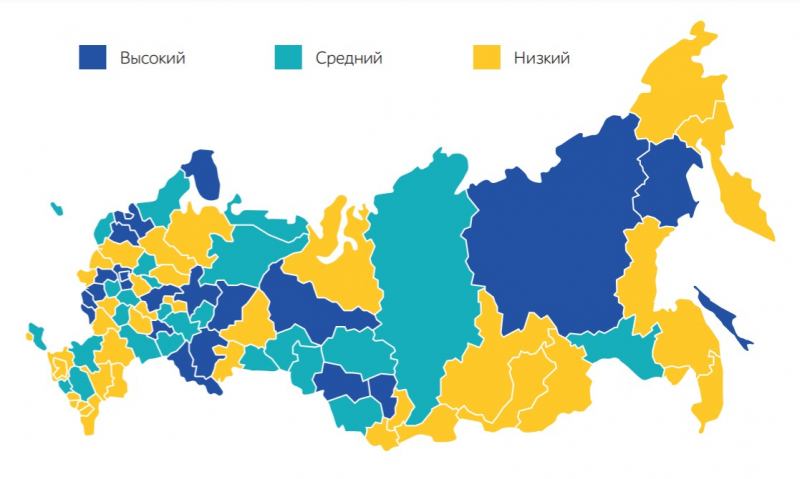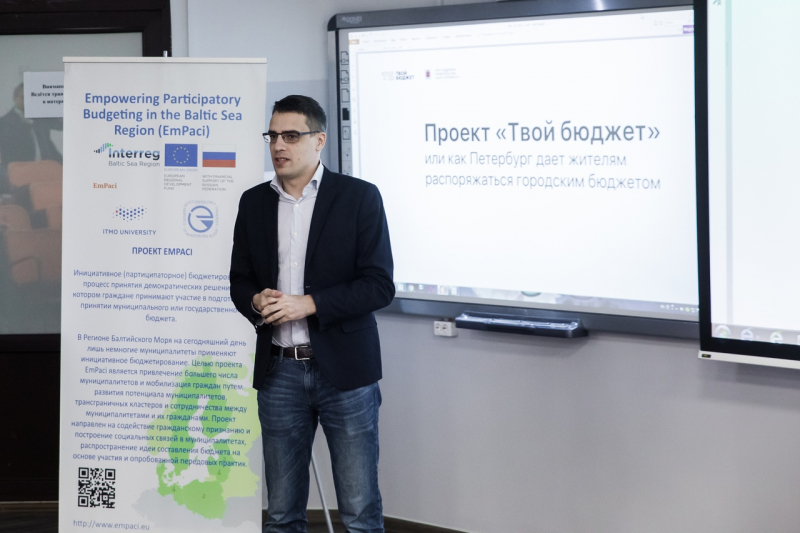Researchers from ITMO University’s eGovernment Center have conducted a global survey of e-participation services in every region of the Russian Federation. They presented the results in the form of a ranking, available in full here (in Russian).
“E-participation is a set of approaches and tools that enable digital communication between citizens and government agencies. Its aim is to account for the citizens’ points of view when making state-wide and regional political and management decisions,” explain the authors at the beginning of the survey.
This research was carried out as part of the Russian Science Foundation project No. 18-18-00360 “E-participation as a factor in the dynamics of politics and policy-making.”
Methodology of the survey
The survey focused on six main channels of e-communication between citizens and government agencies: digital initiatives and petitions; e-voting; public announcement systems; transparent budget services; crowdsourcing; and participatory budgeting.
The researchers evaluated not only the presence of each channel, but also their availability and the ability to track the outcome of one’s requests. The opportunity to give feedback was also taken into account. Each channel received points for each of these parameters; the points were then added up to determine a region’s position in the ranking.
“For instance, our methodology includes a criterion of the possibility for a citizen to see the route of their request,” explains Andrey Chugunov, head of the eGovernment Center and associate professor at the Institute of Design and Urban Studies. “Simply put, some systems allow people to trace their requests all the way after they have been filed. If it is not possible, the system gets zero points. If the only feedback is in the form of an email about the report being accepted, the system gets one point. Then, finally, if each citizen has their own personal page where they can see the name of the employees responsible for their requests, the system gets two points. There would be two experts per every region, and in case the points they gave differed, the team had to decide on the one that would make it into the ranking.”

Ranking of regions
As a result, all regions were divided into three big groups depending on the quality of their e-participation systems – high, middle, and low. The first group consists of 17 regions. Quite predictably, Moscow took first place, followed by the Murmansk Oblast and the Khanty-Mansiysk Autonomous Okrug.
“The subjective factor in Russia is very strong – it is important what the top official thinks,” comments Andrey Chugunov. “In my opinion, the Murmansk Oblast being so high up to a considerable extent has to do with Andrey Chibis presiding over the regional government. During his time at the Ministry of Construction, Housing and Utilities of Russia, he curated the Smart City project, and he also considers it important to promote digital transformation with the Active Citizen system.”
The top-five of the ranking also features the Sakhalin and Moscow Oblasts. The Leningrad Oblast came seventh, followed by St. Petersburg. 26 regions fell into the “middle” category with Novosibirsk and Nizhny Novgorod Oblasts, and the Republic of Sakha among them.
Finally, 39 regions fell into the third category, demonstrating a low level of e-participation. The worst results were demonstrated by the Mari El Republic, the Kostroma Oblast, the Tyva Republic, the Kabardino-Balkarian Republic, and the Chukotka Autonomous Okrug.

Ranking of municipal governments
The researchers evaluated e-participation levels in each of the country’s municipalities separately, for it’s not always that the situation in them is equal to that of the region as a whole. For example, the city of Kaluga demonstrated the highest level of online communication between citizens and the administration, whereas the Kaluga Oblast is in the third (and lowest) category.
“The Kaluga municipality is a classic example of a region developing its center, where new approaches are practiced and the best practices of local governance are implemented. At the same time, Kaluga makes use of all six channels of e-participation. All in all, our study identified only two federal entities that employ the whole set of approaches: Kaluga has implemented local information systems, while the Murmansk Oblast has implemented regional ones,” explains Andrey Chugunov.
Notably, the services available in Moscow, St. Petersburg, and Sevastopol (which are federal cities and therefore considered “regions” of their own) were evaluated in their own category, because it would have been hard to compare to other regions where there are both regional and municipal information systems. The Moscow and Leningrad Oblasts were also included in this group as regions with no “capitals”.

A special type of administrative transparency
According to the researchers, the results of the survey show that regions are focused on receiving digital feedback and that regional and municipal leaders are ready to discuss emerging problems with their citizens by digital means.
“It is a specific indicator of administrative transparency that is becoming especially relevant,” says Andrey Chugunov.
The second stage of the survey will be conducted between December 2020 and January 2021 and will allow the researchers to analyze the dynamics of e-participation development in Russian regions. In the future, the scientists are planning to broaden the project and merge its results with studies evaluating regional development in other fields.
“Next, we will compare our ranking to the one reflecting regional informational development – their general level of digitization, the number of computer and internet users, and the level of economic and human capital development,” concludes Andrey Chugunov.





